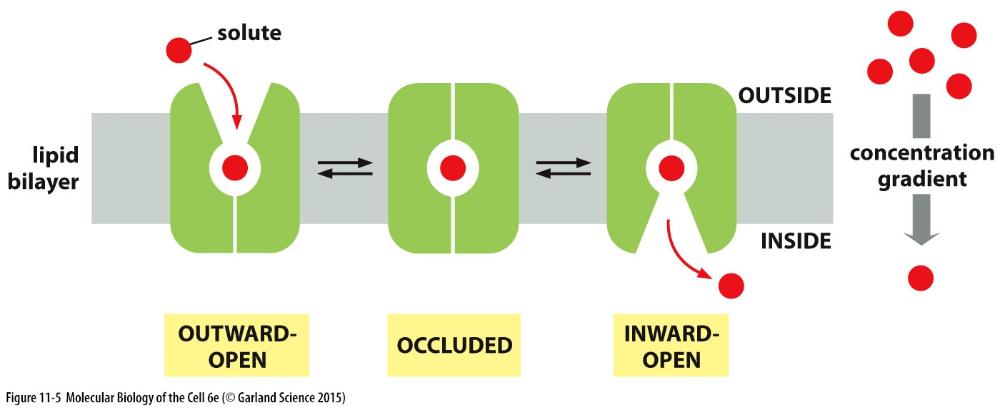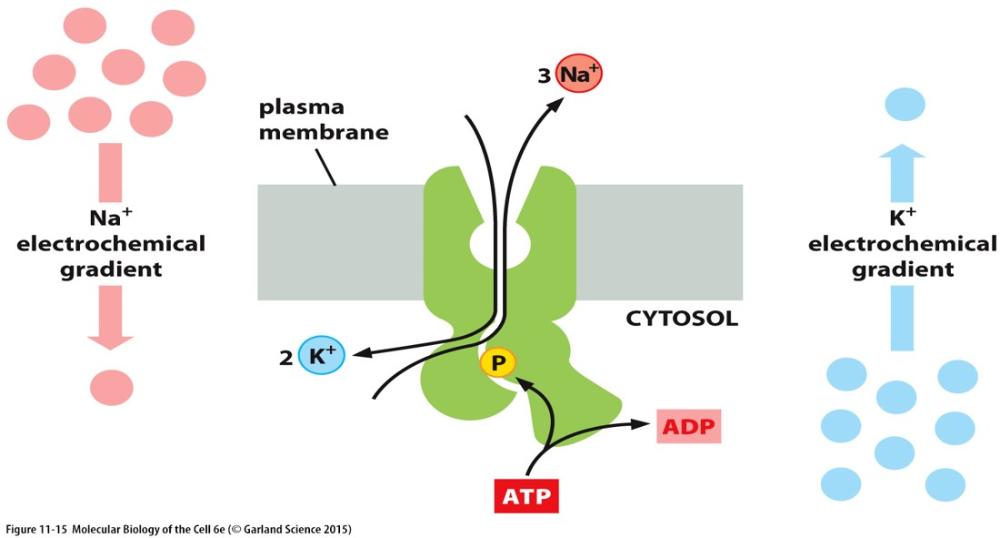Adv Cell Bio midterm
What is the cell membrane?
defines the boundary of the cell and keeps water-soluble molecules separated both within and outside the cell
The cytosol is-
liquid in the cells where all reactions take place
What is the lipid bi-layer?
a fluid, dynamic, in continuous flux and acts as a barrier to the passage of water-soluble molecules
What is a glycoprotein?
a protein with a carbohydrate attached
What is a glycolipid?
lipid with the carbohydrate attached
What are the major lipids in the cell membrane?
phosphoglycerides, sphingolipids, and sterols
What does the fluidity of a lipid bilayer depend on?
its composition
The chemical composition of a lipid determines what properties of the membrane?
physical
What is cholesterol composed of?
a small polar head group, a ring structure, a non polar tail
How does the addition of cholesterol affect the membrane?
the more cholesterol that is present in the membrane, the more rigid and firm the membrane becomes.
Lipid molecules can take up which shape(s) in an aqueous environment?
micelle, lipid bilayer
What is a liposome?
A spherical vesicle that forms to protect the hydrophobic tails and is made of one or more phospholipid bilayers
What are the actions of phospholipids?
- diffuse laterally within the bilayer
- can flex and rotate around their axis
- can flip from one leaflet to another
What are the properties of unsaturated phospholipids?
has C=C double bonds in their tails, have a flex (or kink) that prevents them from packing tightly together
What are the properties of saturated phospholipids?
no C=C double bonds, can pack tightly in the membrane
What is a glycolipid?
has fatty acid tails, with heads made of glycans. they are sugar-lipid hybrids
What is an integral protein?
a protein that is embedded within the lipid bilayer
What is a peripheral protein?
a protein that remains on the outside of the lipid bilayer
What is the process of adding sugars to proteins called?
Glycolysation
The cortical cytoskeleton does what for the membrane?
gives mechanical strength and restricts membrane protein diffusion
Lipid bilayers with no proteins are impermeable to-
Ions
What is the function of a transport/carrier protein?
bind to a certain solute that they transport, undergo conformational changes to transfer the solute across the membrane
What is the function of a channel protein?
minimal interaction with the solute to be transported, and no extensive change conformation.
What is passive transport?
when molecules are transported along the concentration gradient and can be mediated by either channel or carrier proteins
What are some examples of passive transport?
channel-mediated, transporter-mediated, simple diffusion
What is active transport?
mediated by carrier proteins that carry molecules against the concentration gradient.
What are some examples of active transport?
sodium-potassium pump, endocytosis, exocytosis, calcium pumps

What is happening in this picture?
The conformational change of a carrier protein mediates passive transport of the solute across the membrane
In carrier-mediated diffusion, what is the rate of transport?
rate of transport is limited due to the requirement of conformational changes of the carrier protein.
In simple diffusion, what is the rate of transport?
always proportions to the concentration of molecules available for transport.
What is the function of coupled carriers?
transport a molecule against the gradient by allowing the passage of a molecule along the gradient
What is the function of ATP-driven pumps?
couple an uphill transport with the hydrolysis of ATP, uses energy to carry a molecule against the gradient
What is the function of light-driven pumps?
uses energy from light to carry molecules against the chemical gradient
What is the process of transcellular transport?
process of moving substances across polarized cells (epithelial and endothelial) using membrane transport proteins

What is occurring in this picture?
the Na+/K+ pump is transporting both Na+ and K+ ions against their concentration gradients in opposite directions driven by ATP
For every ATP hydrolyzed, ________ are pumped out and _______ are pumped in
3 Na+, 2K+
When do voltage-gated channels open?
in response to a change in voltage across the membrane
When do ligand-gated channels open?
in response to a ligand binding the channel, can be activated by an intracellular ligand (ion, nucleotide) or extracellular ligand (neurotransmitter)
When do mechanically-gated channels open?
in response to mechanical stress